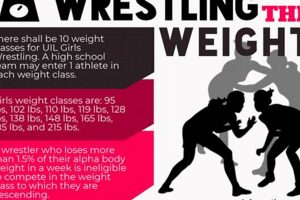The debate regarding bat material in high school baseball centers on the potential safety advantages and potential skill development associated with transitioning from metal to wood. A shift to wooden bats is often advocated for as a way to reduce bat speed and, consequently, the exit velocity of the ball, potentially lessening the risk of injuries to pitchers and infielders. This change could also encourage a greater emphasis on bat control and hitting for average rather than power.
Historically, baseball has been played with wooden bats at nearly every level except youth and high school leagues. Proponents of wooden bats argue that they offer a more authentic baseball experience and better prepare young players for college and professional play. They also suggest that the reduced batted-ball speed with wood could create a more balanced game, emphasizing strategy, pitching, and fielding. The potential for decreased injury risk is a significant driver of this discussion, given the increasing velocity of pitches at the high school level.
The implications of such a shift extend beyond the safety and skill development of individual players. The discussion also involves the cost of wooden bats, the potential impact on offensive production, and the logistical challenges of implementing such a change nationwide. Examining these facets will provide a clearer understanding of the complex issues surrounding bat material in high school baseball.
Tips for Evaluating Bat Material in High School Baseball
Careful consideration of various factors is essential when evaluating the potential use of wooden bats in high school baseball. The following tips offer guidance for coaches, players, parents, and administrators involved in this decision-making process.
Tip 1: Prioritize Player Safety: Assess the potential impact of bat material on player safety. Analyze injury data related to batted-ball velocity and consider the potential for reduced injuries with wooden bats.
Tip 2: Evaluate Skill Development: Consider how different bat materials influence hitting mechanics and skill development. Wooden bats might encourage better bat control and a focus on contact hitting.
Tip 3: Analyze Cost Implications: Compare the cost of wooden bats to metal bats, factoring in the increased frequency of breakage with wood. Explore potential funding sources or assistance programs for players.
Tip 4: Consider Game Pace and Strategy: Evaluate the potential impact of wooden bats on game pace and offensive production. A decrease in home runs might lead to more strategic base running and small-ball tactics.
Tip 5: Examine the Transition Process: If transitioning to wooden bats, develop a phased implementation plan to allow players adequate time to adjust their hitting styles and acquire appropriate equipment.
Tip 6: Gather Feedback from Stakeholders: Solicit input from coaches, players, parents, and umpires regarding the potential change. Conduct surveys or hold meetings to ensure all perspectives are considered.
Tip 7: Review Existing Research: Consult scientific studies and data analyses comparing the performance and safety characteristics of wooden and metal bats.
By carefully weighing these factors, informed decisions can be made about the optimal bat material for high school baseball, prioritizing player safety, skill development, and the overall integrity of the game.
Ultimately, the decision regarding bat material in high school baseball requires careful consideration of the various perspectives and potential consequences.
1. Player Safety
Player safety is a central concern in the discussion surrounding bat material in high school baseball. The potential for injury resulting from batted balls is a significant factor influencing the debate over whether a transition from metal to wooden bats would enhance player safety. Examining specific facets of player safety provides a more nuanced understanding of the issue.
- Batted Ball Velocity
Metal bats generally produce higher batted-ball speeds than wooden bats due to factors like the trampoline effect and a larger sweet spot. This increased velocity elevates the risk of injury, particularly for pitchers and infielders who have less reaction time. A transition to wooden bats could reduce batted-ball speeds, potentially decreasing the risk of severe injuries from line drives.
- Reaction Time
The reduced exit velocity associated with wooden bats could offer pitchers and infielders crucial milliseconds of additional reaction time. This improved reaction time could mean the difference between making a play safely and sustaining an injury. Even a slight increase in reaction time can significantly impact a player’s ability to avoid being struck by a batted ball.
- Protective Equipment Effectiveness
While protective equipment like helmets and chest protectors plays a vital role in mitigating injuries, their effectiveness can be compromised by high-speed impacts. Lower batted-ball speeds resulting from the use of wooden bats might enhance the protective capabilities of existing safety gear, further reducing the risk of serious injury.
- Long-Term Health Considerations
While immediate injuries from batted balls are a primary concern, the long-term health implications of repeated exposure to high-impact collisions should also be considered. Using wooden bats, and the subsequent reduction in batted-ball speed, could contribute to minimizing cumulative trauma and long-term health risks associated with playing baseball.
The potential benefits of wooden bats in mitigating injury risk warrant serious consideration. While other factors contribute to player safety, such as proper coaching, field conditions, and adherence to safety regulations, bat material plays a significant role. A comprehensive approach to player safety in high school baseball should carefully evaluate the potential advantages of using wooden bats in reducing batted-ball velocity and enhancing the effectiveness of protective equipment.
2. Skill Development
The use of wooden bats in high school baseball is often linked to potential improvements in player skill development. Because wooden bats have a smaller sweet spot and offer less forgiveness on mishits compared to metal bats, they necessitate refined hitting mechanics and greater bat control. This argument suggests that transitioning to wood could foster a more disciplined and fundamentally sound approach to hitting.
- Bat Control and Precision
Wooden bats demand greater precision in hitting. The smaller sweet spot requires more accurate bat placement to achieve solid contact. This encourages batters to develop better hand-eye coordination, bat control, and a more discerning approach to swing selection. Players using wooden bats are less likely to rely on sheer power and instead focus on hitting the ball squarely.
- Emphasis on Contact Hitting
The reduced trampoline effect of wood compared to metal bats often translates to a decrease in batted-ball distance. This encourages players to focus on making solid contact and placing the ball strategically rather than simply swinging for the fences. This emphasis on contact hitting can lead to a greater appreciation for the nuances of hitting and a more strategic approach to offensive play.
- Improved Hitting Mechanics
The unforgiving nature of wooden bats can expose flaws in a player’s swing mechanics. Mishits with wood vibrate through the hands, providing immediate feedback and encouraging players to refine their technique. This can lead to a more fundamentally sound swing and potentially reduce the risk of injury caused by poor mechanics.
- Enhanced Plate Discipline
Because hitting successfully with a wooden bat requires precise timing and bat control, players often develop better plate discipline. They become more selective about the pitches they swing at, focusing on pitches they can drive with solid contact. This improved plate discipline can translate to higher on-base percentages and more efficient offensive production.
The potential benefits of wooden bats for skill development extend beyond the individual player. A greater emphasis on contact hitting, strategic batting, and improved plate discipline can lead to a more balanced and engaging style of play at the team level. While the transition to wood may present initial challenges, the long-term benefits for player development could significantly impact the future of high school baseball.
3. Game Pace
Game pace in high school baseball could be significantly affected by a transition to wooden bats. The potential decrease in offensive production, particularly home runs, associated with wooden bats might lead to quicker games. With fewer balls leaving the park, there would be fewer home run trots, pitching changes due to home runs, and overall disruptions to the flow of the game. This potential for increased pace of play could be viewed as a positive aspect of switching to wood, particularly for those concerned about the increasing length of baseball games. For instance, a high school game dominated by singles and doubles, typical of play with wooden bats, could move along considerably faster than a game with multiple pitching changes and lengthy home run celebrations.
However, the relationship between wooden bats and game pace isn’t solely determined by a reduction in home runs. A potential increase in strikeouts due to the smaller sweet spot of wooden bats could also influence game pace, potentially shortening at-bats and leading to quicker innings. Conversely, an increased emphasis on small-ball tactics, such as bunts and stolen bases, which might be favored with wooden bats, could introduce more strategic complexities and potentially slow down the game. For example, a team utilizing more hit-and-run plays and attempting to manufacture runs with bunts and stolen bases might introduce more action on the basepaths and more opportunities for close plays, potentially extending the duration of innings. The actual impact on game pace would depend on the overall shift in offensive strategies employed by teams adapting to wooden bats. Statistical analysis comparing game times in leagues using wooden bats versus metal bats could provide empirical evidence to support these potential outcomes.
Understanding the multifaceted relationship between wooden bats and game pace is crucial for evaluating the overall impact of a potential change in bat material. While the potential for fewer home runs and more strikeouts might contribute to shorter games, the potential increase in strategic plays and close calls on the basepaths could moderate this effect. A comprehensive assessment requires considering all these factors to determine the net effect on game pace and the overall viewing experience. This evaluation should also incorporate the perspectives of players, coaches, and spectators regarding the preferred pace of play and the overall enjoyment of the game.
4. Financial Impact
The financial impact of transitioning to wooden bats in high school baseball presents a significant consideration for schools, teams, and families. Wooden bats are generally more expensive than metal bats and break more frequently, leading to increased costs for replacement. This cost disparity can create a financial burden, particularly for programs with limited budgets or players from lower-income families. For example, a single wooden bat can cost anywhere from $30 to $150 or more, depending on the quality and brand, while a comparable metal bat might be purchased for a similar price initially but last multiple seasons. Over the course of a season, the cumulative cost of replacing broken wooden bats could significantly exceed the investment in a single metal bat. This financial strain could potentially limit access to the sport for some players, raising concerns about equity and accessibility.
Several strategies can be employed to mitigate the financial impact of using wooden bats. Schools and leagues could explore bulk purchasing options to negotiate lower prices from manufacturers. Fundraising efforts, such as bat drives or sponsorship programs, could help offset the costs for players. Implementing bat regulations, such as specifying approved bat types or establishing a maximum bat weight or barrel diameter, might also help control costs by limiting the demand for premium, high-priced models. Additionally, some manufacturers offer bat repair services or warranty programs, which could extend the lifespan of wooden bats and reduce the frequency of replacement. Exploring these options can help ensure that the financial implications of switching to wood do not create an undue hardship for players or programs.
Ultimately, the financial implications of transitioning to wooden bats represent a practical hurdle that must be addressed. While the potential benefits of wooden bats in terms of safety and skill development are often cited, the increased costs associated with their use cannot be ignored. A balanced approach that considers both the potential advantages and the financial realities is necessary to make informed decisions about bat material in high school baseball. Failing to address the financial impact could exacerbate existing inequalities and potentially limit opportunities for participation in the sport.
5. Tradition and Authenticity
The debate surrounding bat material in high school baseball often invokes the concepts of tradition and authenticity. Proponents of wooden bats argue that they represent a return to the historical roots of the game, offering a more authentic baseball experience. This perspective connects the use of wooden bats to a perceived purity of the sport, aligning with how the game was played for generations before the advent of metal bats. Understanding this connection requires examining the historical context and the perceived values associated with traditional baseball.
- Historical Context
Baseball was played with wooden bats for over a century before the introduction of metal bats at various levels. This historical precedent establishes wood as the traditional bat material, representing the way the game was originally conceived and played. Advocates for wooden bats often point to this long history as a justification for maintaining their use, arguing that it preserves the integrity and historical continuity of the sport.
- The “Feel” of the Game
Many players and coaches believe that wooden bats offer a more authentic “feel” for the game. The feedback provided by the vibration of a wooden bat upon contact, the distinct sound of a well-hit ball, and the weight and balance of wood are all cited as contributing to a more connected and traditional baseball experience. This tactile and auditory feedback is often contrasted with the perceived muted sensations of hitting with a metal bat.
- Development of Respect for the Game
Some argue that using wooden bats cultivates a greater respect for the game. The challenges associated with hitting successfully with wood, the increased risk of breaking a bat, and the need for greater precision and bat control are seen as contributing to a more disciplined and appreciative approach to baseball. This perspective suggests that the difficulties inherent in using wooden bats foster a deeper understanding and appreciation for the nuances of the sport.
- Connection to Professional Baseball
Professional baseball, the pinnacle of the sport, exclusively uses wooden bats. Advocates for wood at the high school level often argue that using the same equipment as professionals provides a more authentic experience and better prepares young players for the highest levels of competition. This connection to professional baseball reinforces the perception of wood as the true and traditional bat material.
The arguments for wooden bats based on tradition and authenticity often intersect with discussions about skill development and the overall integrity of the game. While the perceived connection to the historical roots of baseball resonates with many, it’s crucial to balance these considerations with practical factors such as player safety, financial implications, and the evolving nature of the sport. Ultimately, the decision of whether to use wooden bats in high school baseball requires a nuanced understanding of the interplay between tradition, modernity, and the overall goals of the sport.
6. Competitive Balance
Competitive balance in high school baseball is significantly influenced by the choice of bat material. The debate over whether to use wooden or metal bats centers on how each material affects offensive and defensive performance. Metal bats, known for their larger sweet spots and trampoline effect, generally lead to higher batted-ball speeds and more home runs, potentially creating an offensive imbalance. A shift to wooden bats could theoretically level the playing field by reducing offensive output and emphasizing pitching and defense.
- Reduced Offensive Output
Wooden bats typically result in lower batted-ball speeds and fewer home runs, potentially shifting the balance of power towards pitching and defense. This reduction in offensive firepower could lead to lower-scoring games and a greater emphasis on strategic execution, such as bunting, stealing bases, and manufacturing runs. For example, a team facing a dominant pitcher might employ more small-ball tactics to scratch across runs rather than relying on extra-base hits.
- Emphasis on Pitching and Defense
With a decrease in offensive production, pitching and defense become more prominent factors in determining game outcomes. Pitchers may gain more confidence attacking hitters, knowing that mistakes are less likely to result in home runs. Improved fielding and strategic defensive positioning become more critical for preventing runs. A team with a strong pitching staff and solid defense could become more competitive, even with a less powerful offense.
- Parity Between Teams
A shift to wooden bats could create greater parity between teams of differing skill levels. The reduced offensive advantage provided by metal bats might narrow the gap between stronger and weaker hitting teams. This could lead to more competitive games and a more balanced league overall. For instance, a team with less experienced hitters might be more competitive against a team with powerful hitters if both teams are using wooden bats.
- Impact on Player Development and Recruitment
The choice of bat material could influence player development and recruitment. If high school baseball transitions to wood, players might focus more on developing bat control, plate discipline, and other skills relevant to hitting with wood. College and professional scouts might also place greater emphasis on these skills when evaluating high school players. This could shift the emphasis from power hitting to more well-rounded skill sets.
The impact of bat material on competitive balance is a complex issue with potential implications for various aspects of high school baseball. While a shift to wooden bats could lead to more balanced competition by reducing offensive output and increasing the importance of pitching and defense, it could also alter player development pathways and scouting evaluations. A thorough understanding of these potential consequences is essential for making informed decisions about bat material and its impact on the competitive landscape of high school baseball.
7. Transition Challenges
Transitioning to wooden bats in high school baseball presents numerous challenges requiring careful consideration and proactive solutions. These challenges encompass player adjustments, coaching adaptations, equipment acquisition and maintenance, and potential psychological impacts. Players accustomed to the lighter weight and larger sweet spot of metal bats would need time to adjust their swing mechanics and timing. Coaches would need to modify training drills and offensive strategies to accommodate the different characteristics of wooden bats. The increased cost and higher breakage rate of wood necessitate new budgeting strategies and equipment management practices. For example, teams might need to invest in bat repair equipment or explore strategies for extending the lifespan of wooden bats. Players might also experience psychological challenges, such as frustration with increased strikeouts or a perceived decrease in hitting performance during the initial adjustment period. Addressing these psychological factors is crucial for ensuring a smooth and positive transition.
A phased implementation could mitigate these challenges. Introducing wooden bats gradually, perhaps starting with practices or specific game scenarios, allows players to adapt incrementally. Providing players with access to professional hitting instruction specializing in wooden bat techniques can accelerate the learning curve. Schools and leagues can organize workshops for coaches to share best practices and develop effective training strategies for wooden bats. Exploring partnerships with bat manufacturers or sporting goods retailers could provide access to discounted bats or bat repair services. Open communication between coaches, players, and parents helps manage expectations and address concerns throughout the transition process. Real-world examples of successful transitions in other leagues or levels of baseball offer valuable insights and practical guidance.
Successfully navigating the transition to wooden bats requires a comprehensive approach that acknowledges and addresses the inherent challenges. Proactive planning, resource allocation, and effective communication are essential for mitigating potential disruptions and ensuring a positive outcome. Failing to adequately address these challenges could undermine the potential benefits of switching to wood and create unnecessary obstacles for players, coaches, and programs. Ultimately, the success of a transition hinges on a collective effort to adapt and embrace the change while prioritizing the long-term development and well-being of high school baseball players.
Frequently Asked Questions
This FAQ section addresses common questions and concerns regarding the potential use of wooden bats in high school baseball. The information provided aims to offer clarity and facilitate informed discussions on this complex topic.
Question 1: Would switching to wooden bats significantly reduce the risk of injuries in high school baseball?
While wooden bats generally produce lower batted-ball speeds than metal bats, the extent to which this reduces injuries remains a subject of ongoing research and debate. Several factors, including pitching velocity, player reaction time, and the effectiveness of protective equipment, contribute to overall player safety. A holistic approach to injury prevention is crucial.
Question 2: How would the use of wooden bats affect player development at the high school level?
Wooden bats are often associated with improved bat control, a greater emphasis on contact hitting, and enhanced plate discipline. The smaller sweet spot and reduced trampoline effect of wood necessitate a more refined hitting approach, potentially leading to improvements in these specific skills. However, the overall impact on player development requires further study.
Question 3: What are the primary cost considerations associated with using wooden bats?
Wooden bats are typically more expensive than metal bats and break more frequently. This can create a financial burden for schools, teams, and families. Exploring cost-mitigation strategies, such as bulk purchasing, fundraising, and bat repair programs, is crucial for managing the financial implications of switching to wood.
Question 4: How might a transition to wooden bats impact the pace of play in high school baseball games?
The effect on game pace is multifaceted. While fewer home runs might lead to shorter games, increased strikeouts or a greater emphasis on small-ball tactics could influence the pace in various ways. Further research and analysis are needed to determine the net effect on game duration.
Question 5: Would the use of wooden bats create a more balanced competitive environment in high school baseball?
Theoretically, wooden bats could promote greater competitive balance by reducing the offensive advantage associated with metal bats. This might lead to more emphasis on pitching, defense, and strategic play. However, the actual impact on competitive balance is subject to various factors and warrants further investigation.
Question 6: What are the main logistical challenges involved in transitioning from metal to wooden bats?
Key challenges include player adjustment to the different feel and performance of wooden bats, coaching adaptations to training and game strategies, equipment acquisition and maintenance, and addressing potential psychological impacts on players. Careful planning and implementation strategies are crucial for managing these challenges effectively.
Careful consideration of these frequently asked questions is essential for fostering informed discussions and making sound decisions about bat material in high school baseball. A balanced approach that considers player safety, skill development, financial implications, and the overall impact on the game is crucial.
Further research and data analysis are needed to fully understand the complex interplay of these factors and to determine the optimal approach for high school baseball.
Should High School Baseball Use Wooden Bats? A Conclusion
The question of whether high school baseball should transition to wooden bats presents a complex issue with no easy answers. This exploration has highlighted the multifaceted nature of the debate, encompassing player safety, skill development, financial considerations, game pace and strategy, historical context, competitive balance, and the practical challenges of implementing such a change. While potential benefits exist regarding reduced batted-ball speeds and a renewed emphasis on fundamental hitting skills, the financial burden on schools and families, the need for player adjustment periods, and the potential impact on game dynamics warrant careful consideration. The discussion also touches upon deeper questions of tradition, authenticity, and the desired direction of high school baseball.
Ultimately, the decision regarding bat material in high school baseball requires a thorough assessment of the potential advantages and disadvantages, balanced against the specific context of individual leagues, schools, and player populations. Continued research, open dialogue, and a commitment to prioritizing the long-term well-being of young athletes are essential for navigating this complex issue and shaping the future of the sport.







